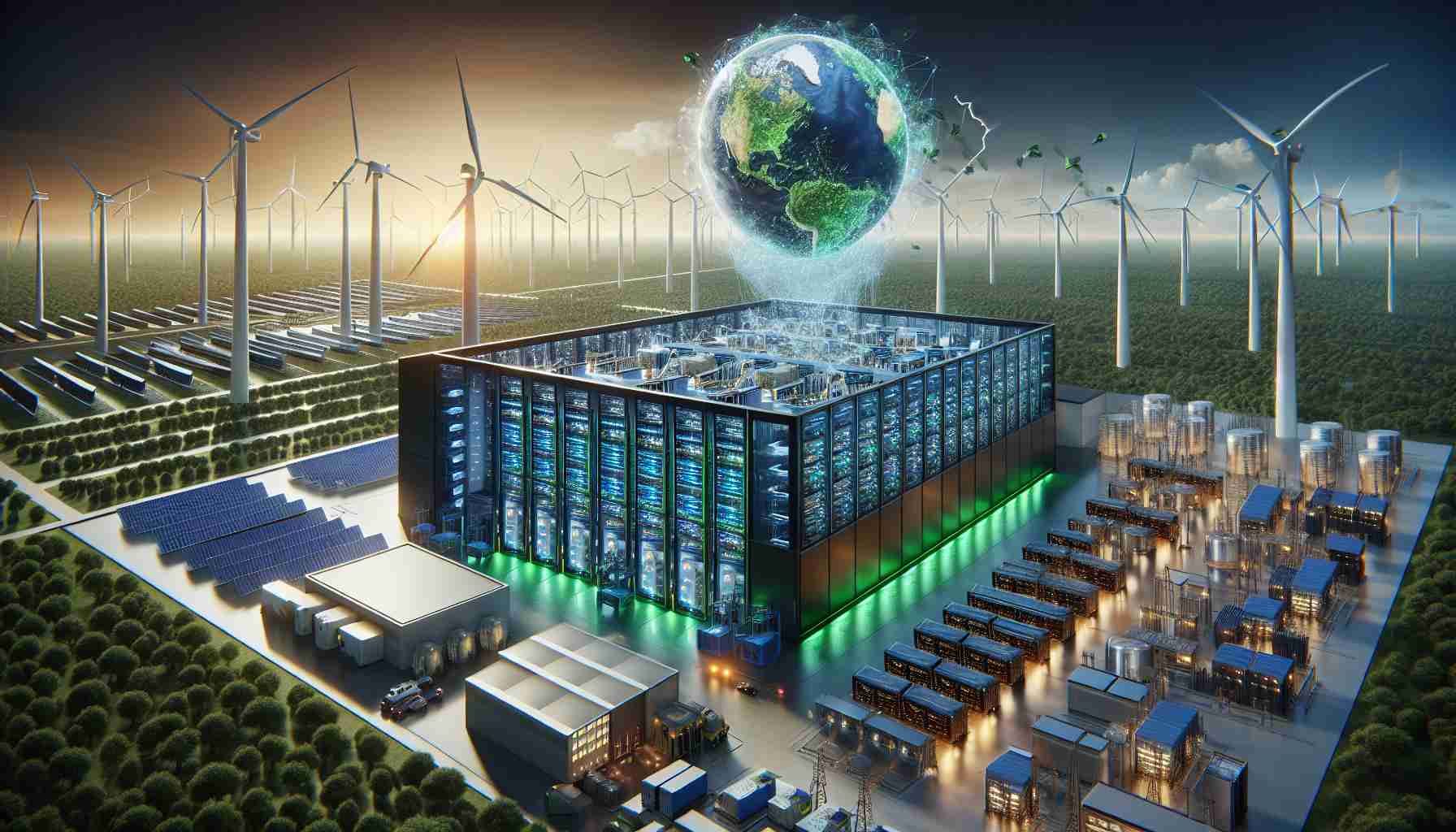The landscape of artificial intelligence (AI) is transforming rapidly, bringing about a doubling of data generation by consumers and businesses over the next five years, compared to the entirety of the last decade. This staggering projection by advisory firm IDC implies a significant surge in energy consumption, a resource that’s becoming increasingly expensive and scarce.
Ireland, a major data processing hub, illustrates the trend with an expected leap in energy usage by data centers—up to 30% of the country’s total electrical consumption by 2030, a steep increase from 19% in 2022. Denmark and Poland are witnessing similar growth, with the latter’s data center capacity projected to quadruple by the decade’s end.
Despite technological advancements, AI’s rapid ascension is pushing the boundaries of energy efficiency and environmental sustainability in the data center industry. Advances in energy efficiency have shown progress, but the global average Power Usage Effectiveness (PUE)—a measure of data center energy efficiency—indicates significant room for improvement. Beyond.pl, a Polish provider of data center services, emphasizes the importance of evolving design and operational standards for data centers to optimize performance while minimizing environmental impacts.
Innovative solutions, such as liquid cooling systems for servers, are emerging to meet AI’s unique infrastructure requirements. These systems promise superior cooling efficiency with reduced energy and water consumption. However, retrofitting existing facilities, especially within the densely populated FLAP-D markets (Frankfurt, London, Amsterdam, Paris, Dublin), is challenging due to time and resource restraints.
With traditional data centers facing challenges and market shifts, emerging markets present new opportunities. Beyond.pl forecasts the potential for regions like Poland to attract AI infrastructure projects due to their access to green power and modern, efficient data centers with competitive PUE metrics.
Reflecting industry consensus on the AI-induced market evolution, Nvidia’s CEO Jensen Huang anticipates a global spend of $2 trillion on new and upgraded data centers over the next four years. This investment is poised to support the AI revolution, driven by hyperscalers and tech firms at the forefront of advancement.
Key Questions and Answers
1. Why does the surge in AI drive demand for more energy?
AI applications require massive computational power, which involves data centers with servers running 24/7. As AI becomes more complex and more widely used, the amount of computation—and thus energy needed—increases dramatically.
2. What are the main challenges in making data centers more energy-efficient?
Challenges include the cost and complexity of upgrading existing infrastructure, the need to maintain high performance and reliability, and the variability in energy sources used to power data centers.
3. What controversies are associated with data centers’ energy consumption?
There’s a growing concern regarding the environmental impact of high energy consumption. The carbon footprint of data centers is substantial, and there is pressure to switch to renewable energy sources. However, there are debates over the readiness of renewable sources to meet all energy demands and their own environmental implications.
4. What are the advancement and disadvantages of using liquid cooling systems?
Advancements include significantly better cooling efficiency, which can reduce energy and water usage. Disadvantages may involve higher initial costs, the need for specialized infrastructure, and potential challenges with maintenance and leaks.
Advantages and Disadvantages
Advantages:
– Increased AI capabilities can drive innovation and economic growth.
– Advanced data centers are designed to be more energy-efficient than older ones.
– There’s a push for renewable energy use, which can lead to reduced carbon emissions.
– New job opportunities in emerging markets due to infrastructure development.
Disadvantages:
– The surge in AI and data centers could lead to increased energy consumption, possibly outpacing efficiency gains.
– Upgrades to greener technologies can be costly and complex.
– There is a risk of exacerbating environmental impacts if renewable energy sources do not sufficiently meet demand.
– Data center growth can stress local energy infrastructures, particularly in dense urban areas.
The topic is crucial for industry stakeholders, such as data center operators, AI service providers, and environmental regulators. It is also relevant to the public, as both the benefits of AI and concerns about the environment are common societal interests.
For related information, you can visit these domains:
– Nvidia
– IDC
– Beyond.pl
Please ensure to verify that the URLs provided are valid and lead to the correct websites.

